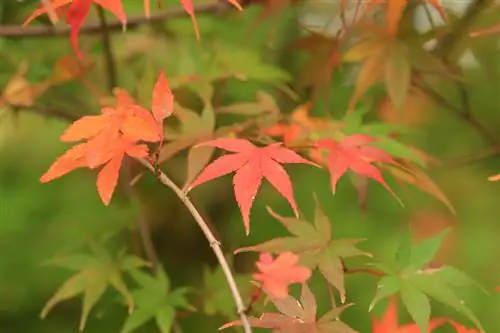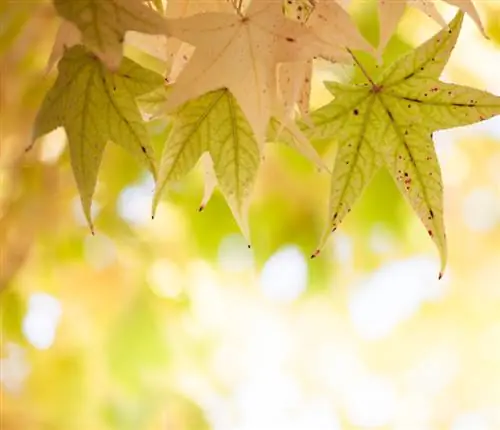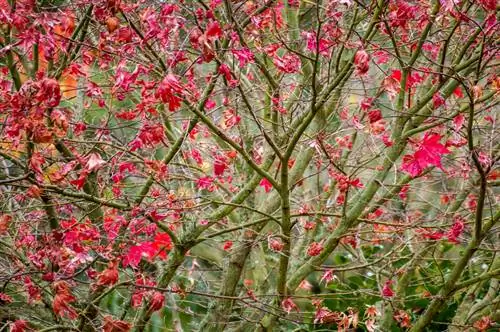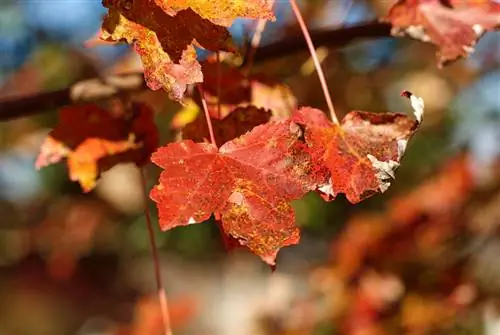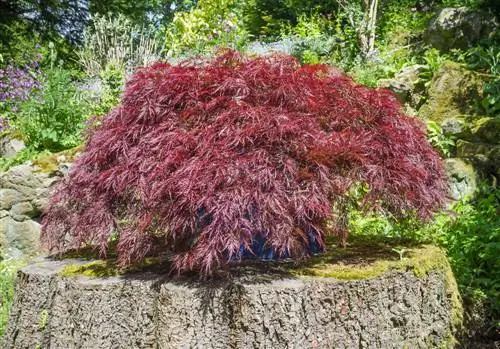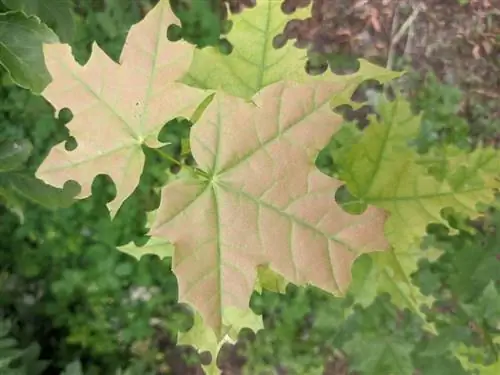- Author admin [email protected].
- Public 2023-12-16 16:46.
- Last modified 2025-06-01 06:02.
No matter whether Japanese maple, Japanese maple or golden maple - all of these Japanese maples are very popular not only because of their delicate appearance and wonderful autumn colors. The exotic trees are also quite easy to care for, can be cultivated wonderfully in pots and are also considered hardy in Central European regions. Furthermore, Japanese maple is quite robust and has little tendency to disease or fungal attack.
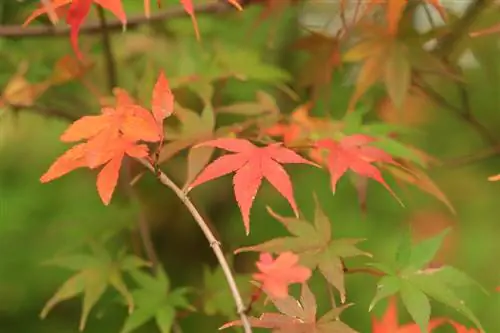
What diseases occur in the Japanese maple?
Typical diseases of the Japanese maple include verticillium wilt, powdery mildew and pest infestation. Verticillium wilt is usually fatal, while powdery mildew can be controlled by spraying milk-water mixture or fungicides. The right location and careful care help prevent this.
Wrong location and/or care is often to blame
If your Japanese maple is growing poorly, has brown and/or dry leaves or shows clear signs of fungal or pest infestation, it is usually due to an unsuitable location and/or incorrect care. With regard to the location, make sure it is in a warm, sunny and, above all, protected place - the tree does not tolerate wind and drafts particularly well. Waterlogging can also be dangerous for the tree, which is why the planting substrate should be thoroughly loosened before planting. Ideally, plant the Japanese maple in a slightly sloping spot.
Deadly Threat of Verticillium Wilt
If the foliage droops and branches die for no apparent reason, the dreaded verticillium wilt may be behind it. This is a contagious and extremely dangerous disease that is caused by fungi of the genus Verticillium and primarily affects maples. There is currently no herb (or fungicide) available to combat verticillium wilt and affected plants can only be saved in rare cases. If the infestation is not yet too severe, you can prune the tree - throw cut parts of the plant into the household waste and never into the compost! - and dig it up and place it in a bucket with fresh substrate.
Other fungal diseases
Mildew can occur on Japanese maples, especially in rainy summers and as a result of incorrect watering. In this fungal disease, leaves and shoots become covered with a grey-white, greasy carpet of fungi. The pathogen is transmitted via water, which is why Japanese maple should never be watered from above. Powdery mildew can be combated quite successfully by spraying with a milk-water mixture or a fungicide.
Tip
Never plant a maple tree in a location where verticillium wilt has already occurred - even if the soil in that location has already been replaced!

